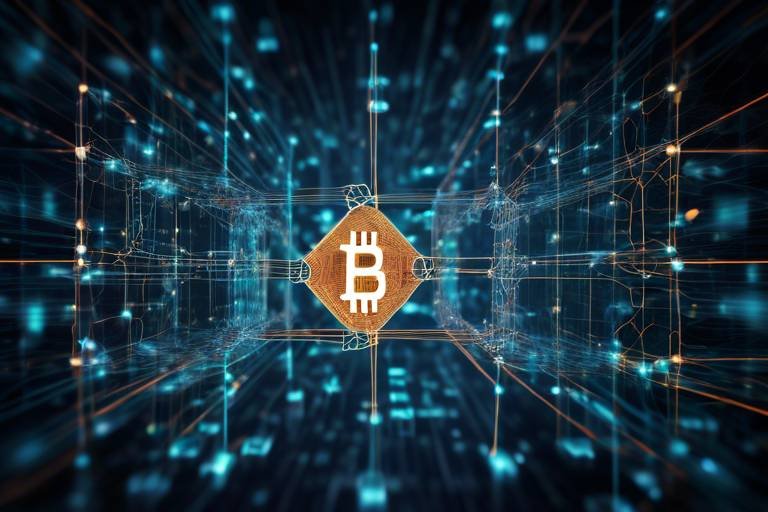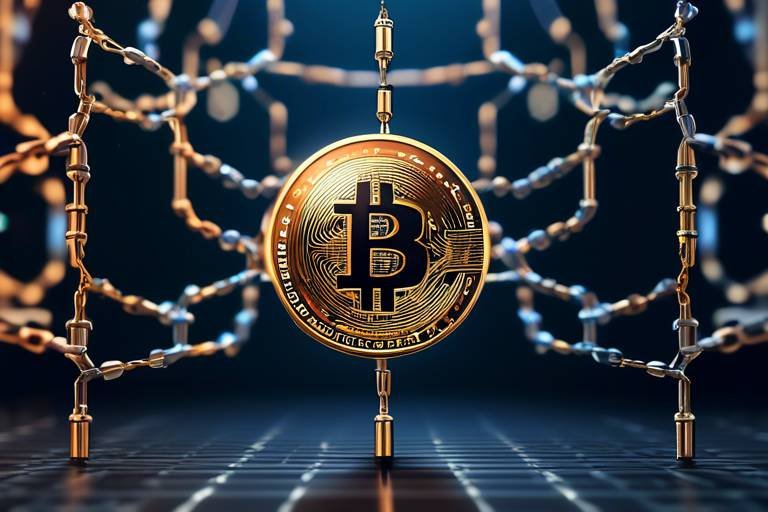Understanding the Economic Models Behind Blockchain Networks
In the ever-evolving landscape of technology, blockchain stands out not just as a buzzword but as a transformative force that is reshaping industries. At the heart of this innovation lies a complex web of economic models that dictate how these decentralized networks operate. Understanding these models is crucial for anyone looking to navigate the blockchain ecosystem effectively. Think of blockchain like a bustling city; each economic model serves as a different neighborhood, with its own unique characteristics and inhabitants. Just as neighborhoods influence the behavior of their residents, these economic models shape the actions of participants in the blockchain space.
So, what exactly do we mean by "economic models" in the context of blockchain? Essentially, these models encompass the incentive structures, tokenomics, and consensus mechanisms that drive the behavior of users within the network. They play a pivotal role in attracting participants, ensuring security, and fostering a sense of community. For instance, consider how a city thrives on its economy; similarly, blockchain networks rely on well-designed economic models to flourish. Without these models, the blockchain would be akin to a city without a plan—chaotic and unsustainable.
One of the most fascinating aspects of blockchain economic models is how they incentivize participation. Imagine you're part of a club where every member is rewarded for their contributions. This is precisely how incentive structures work in blockchain networks. They motivate users to validate transactions, contribute resources, and engage with the platform. The more participants contribute, the stronger and more secure the network becomes. It’s a classic case of "the more, the merrier," but with a twist—everyone has a stake in the outcome.
Additionally, the concept of tokenomics is central to understanding blockchain economics. Tokenomics refers to the economic principles that govern the creation, distribution, and management of tokens within a blockchain network. These tokens can serve various purposes, from facilitating transactions to representing ownership in a digital asset. The design of these tokens can significantly impact user engagement and value creation. For example, a well-designed utility token can spur interaction within a decentralized application, much like a loyalty program encourages customers to return to a store.
As we delve deeper into the world of blockchain, it’s essential to differentiate between utility tokens and security tokens. This distinction is not just academic; it has real implications for users and investors alike. Utility tokens are designed for specific functionalities within a network, allowing users to access services or products. On the other hand, security tokens represent ownership in an asset and are subject to regulatory scrutiny. Understanding these differences is crucial for anyone looking to invest or participate in blockchain networks.
To further illustrate the impact of tokenomics, let’s consider a simple table that outlines the key differences between utility tokens and security tokens:
| Aspect | Utility Tokens | Security Tokens |
|---|---|---|
| Purpose | Access to a product/service | Ownership in an asset |
| Regulatory Status | Less regulated | Highly regulated |
| Examples | Ether (ETH), Binance Coin (BNB) | tZERO, Polymath |
In summary, understanding the economic models behind blockchain networks is not just an academic exercise; it’s a gateway to comprehending how these systems function and thrive. By grasping the intricacies of incentive structures, tokenomics, and consensus mechanisms, you can better navigate the complexities of the blockchain landscape. Whether you’re a developer, investor, or simply a curious observer, these insights can empower you to make informed decisions and engage meaningfully with decentralized technologies.
What are the main types of tokens in blockchain?
The two main types of tokens are utility tokens and security tokens. Utility tokens provide access to a product or service, while security tokens represent ownership in an asset and are subject to regulatory oversight.
How do incentive structures work in blockchain?
Incentive structures motivate participants to engage with the network by rewarding them for validating transactions and contributing resources, thereby enhancing the security and efficiency of the blockchain.
What is tokenomics?
Tokenomics refers to the economic principles governing the creation, distribution, and management of tokens within blockchain networks, influencing user engagement and value creation.

[Incentive Structures in Blockchain]
In the fascinating world of blockchain, incentive structures play a pivotal role in motivating participants to engage with the network. Imagine a bustling marketplace where every vendor is eager to showcase their goods, but what drives them to do so? In blockchain, much like in our marketplace analogy, the incentives are the driving forces that encourage individuals to contribute resources, validate transactions, and ultimately ensure the network's integrity. Without these incentives, the entire ecosystem could collapse under its own weight.
At the heart of these incentive structures are economic rewards, which can take various forms depending on the blockchain's design. For instance, in a Proof of Work (PoW) system, miners are rewarded with cryptocurrency for solving complex mathematical problems, validating transactions, and securing the network. This is akin to a race where the fastest runner not only crosses the finish line but also receives a prize for their effort. On the other hand, Proof of Stake (PoS) networks offer rewards to participants who lock up their tokens to support the network's operations, creating a different kind of incentive that encourages long-term investment.
Moreover, these incentive structures are not just about monetary rewards; they also encompass social incentives. For example, participants may feel a sense of community or belonging when they contribute to the network, fostering collaboration and shared goals. This social aspect can be just as motivating as financial gain, as individuals often seek recognition and validation within their communities. In fact, many blockchain projects have thriving communities where members actively engage, sharing knowledge and supporting one another, which enhances the overall security and efficiency of the network.
To illustrate the impact of various incentive structures, consider the following table that compares different blockchain models:
| Blockchain Model | Incentive Type | Example |
|---|---|---|
| Proof of Work | Monetary (block rewards) | Bitcoin |
| Proof of Stake | Monetary (staking rewards) | Ethereum 2.0 |
| Delegated Proof of Stake | Monetary & Social | EOS |
| Proof of Authority | Social | VeChain |
As seen in the table, the incentive types vary significantly across different blockchain models, influencing how participants interact with the network. Each model has its own unique way of rewarding contributions, which in turn affects the overall security and efficiency of the system. Understanding these structures is essential for anyone looking to navigate the complex landscape of blockchain technology.
In conclusion, incentive structures in blockchain are the lifeblood of decentralized networks. They not only motivate participants to engage but also establish a framework that promotes security, efficiency, and community involvement. As the blockchain ecosystem continues to evolve, so too will the incentives that drive it, paving the way for innovative solutions and applications that we have yet to imagine.
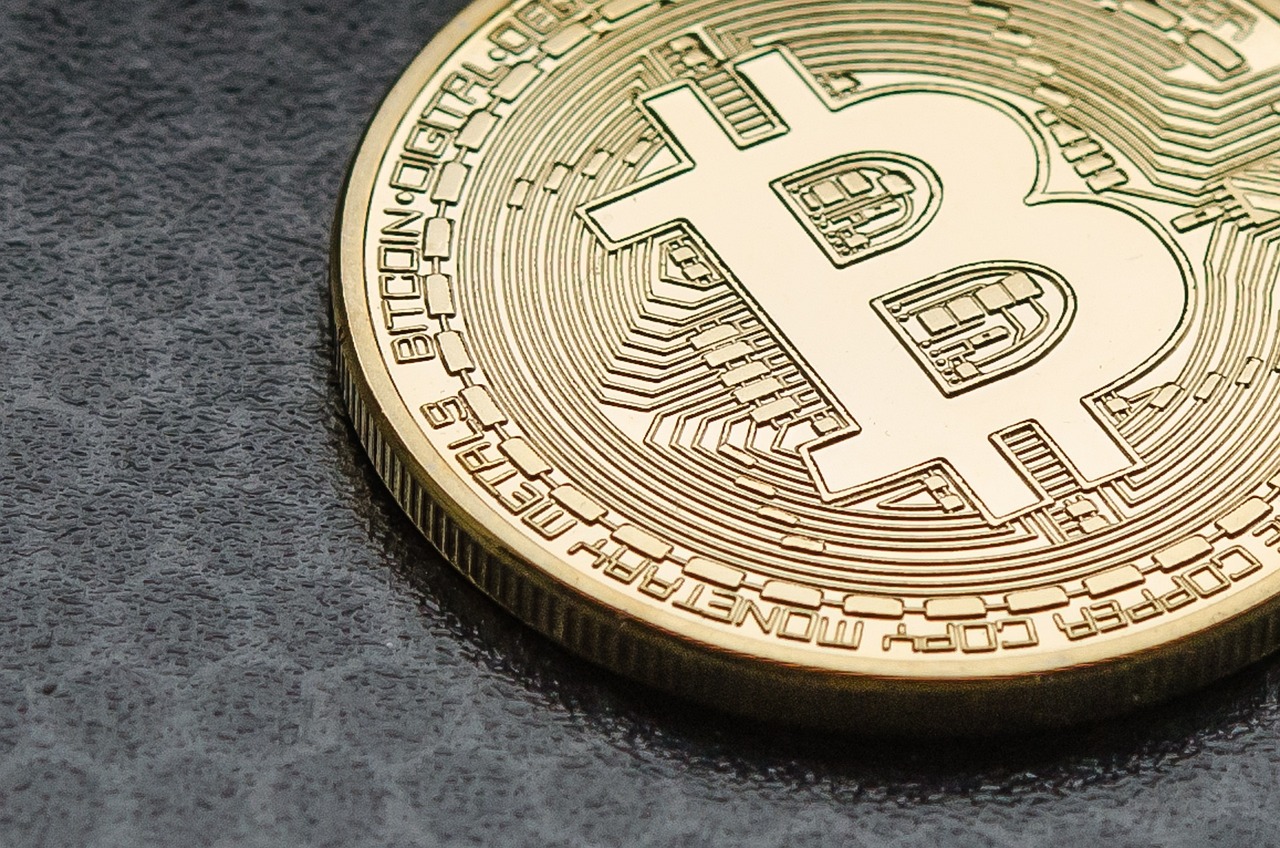
[Tokenomics: The Role of Tokens]
Tokenomics is a fascinating concept that revolves around the economic principles governing the creation, distribution, and utilization of tokens within blockchain networks. To put it simply, it's the study of how tokens work in the broader ecosystem of decentralized technologies. Just like how currency operates in traditional economies, tokens serve as the lifeblood of blockchain networks, influencing everything from user engagement to the overall value proposition of a platform. But what makes tokenomics so crucial? It's all about understanding the motivations behind token usage and how they can either propel a project forward or lead it into obscurity.
At the core of tokenomics lies the concept of supply and demand. When a token is scarce and has a clear utility, its value tends to increase, attracting more users and investors. Conversely, if a token is oversupplied with little to no utility, it risks losing value and interest. This dynamic creates a delicate balance that projects must navigate to ensure sustainability. For instance, consider a new decentralized application (dApp) that offers unique features but issues an excessive amount of tokens without a clear purpose. Users may initially be drawn in, but without a solid economic model, the project could quickly fizzle out.
The design of a token can significantly impact user engagement. Utility tokens, for example, are designed to provide access to specific functionalities within a network. They empower users to participate in various activities—like voting on governance proposals or accessing premium features—thus fostering a sense of community and ownership. On the other hand, security tokens represent ownership in an asset and are subject to regulatory scrutiny. Understanding these distinctions is vital for both users and investors, as they dictate how tokens can be used and the potential risks involved.
To illustrate the importance of tokenomics, let's take a look at a simplified table comparing utility tokens and security tokens:
| Feature | Utility Tokens | Security Tokens |
|---|---|---|
| Purpose | Access to services or products | Ownership in an asset |
| Regulatory Status | Generally unregulated | Subject to securities regulations |
| Use Cases | In-app purchases, voting, staking | Investment, dividends, profit sharing |
In the world of blockchain, tokenomics isn't just a buzzword; it's a fundamental aspect that shapes the user experience and the economic viability of projects. By carefully crafting the tokenomics model, developers can create robust ecosystems that not only attract users but also keep them engaged over the long haul. This is where the magic happens—when a well-designed tokenomics strategy aligns the interests of users, developers, and investors, it can lead to a thriving community and a successful project.
As we delve deeper into the complexities of blockchain networks, it’s essential to recognize that tokenomics is not a one-size-fits-all solution. Each project may require a unique approach based on its goals, target audience, and market conditions. Therefore, understanding the nuances of tokenomics can greatly enhance an investor's or user's ability to evaluate a project’s potential. The more informed you are about how tokens function within their respective ecosystems, the better equipped you will be to make decisions that align with your interests and objectives.
In conclusion, tokenomics plays a vital role in shaping the landscape of blockchain networks. By understanding the economic principles behind tokens, users can navigate the decentralized world more effectively, ensuring that they participate in projects that offer genuine value and sustainability. So, the next time you come across a new token or blockchain project, take a moment to analyze its tokenomics. You might just uncover the key to its success or failure.
- What is tokenomics? Tokenomics refers to the study of the economic principles that govern the creation, distribution, and utilization of tokens within blockchain networks.
- What is the difference between utility tokens and security tokens? Utility tokens provide access to services or products within a network, while security tokens represent ownership in an asset and are subject to regulatory scrutiny.
- Why is supply and demand important in tokenomics? The balance of supply and demand affects a token's value, influencing user interest and engagement in a project.
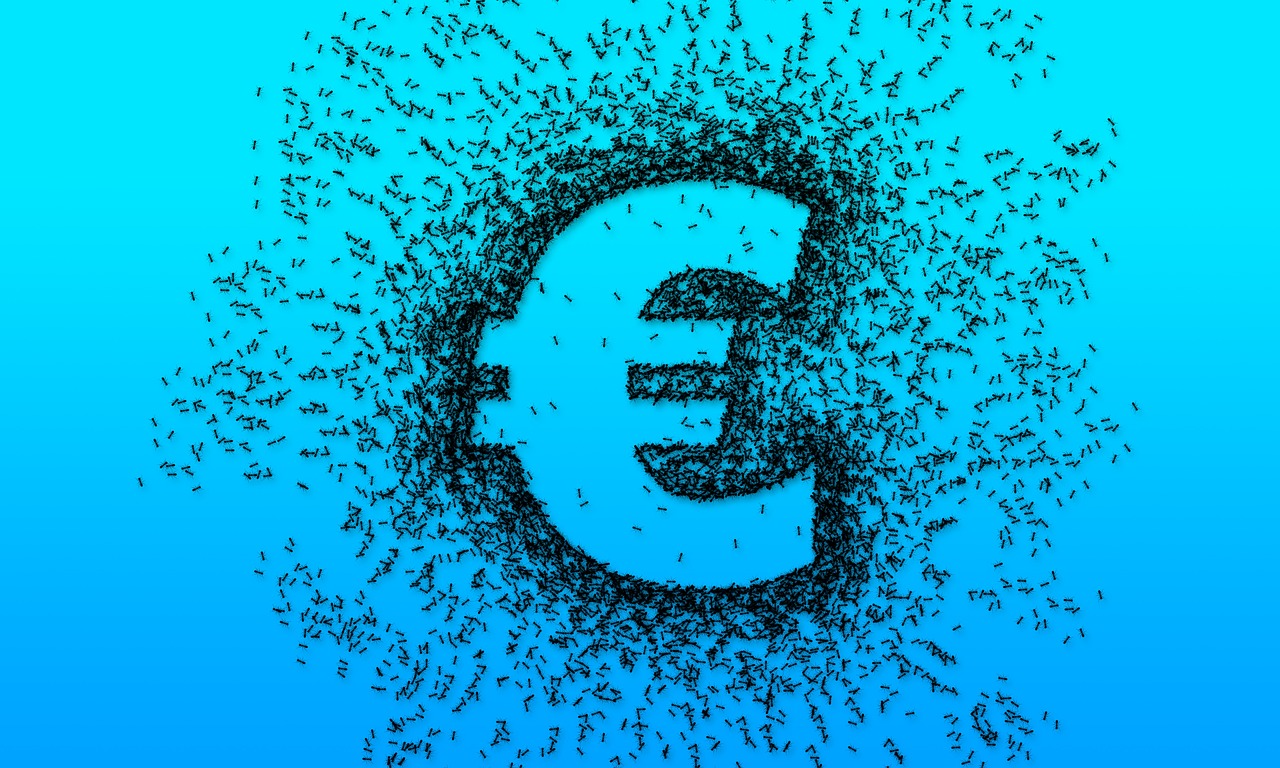
[Utility Tokens vs. Security Tokens]
When diving into the world of blockchain, one of the most intriguing aspects is the distinction between utility tokens and security tokens. It's like comparing apples and oranges; while both are fruits of the blockchain ecosystem, they serve different purposes and come with their own sets of rules. Utility tokens are designed to provide users with access to a product or service within a blockchain network. Think of them as the tickets you buy for a concert; they grant you entry to an event, but they don’t represent ownership of the venue. On the other hand, security tokens are akin to stock certificates. They represent ownership in an underlying asset and are subject to regulatory scrutiny. This difference is crucial as it affects how tokens are treated legally and how they can be used.
To further clarify, let's break down some of the key differences between these two types of tokens:
| Feature | Utility Tokens | Security Tokens |
|---|---|---|
| Purpose | Access to a service or product | Ownership in an asset or company |
| Regulation | Less regulated | Heavily regulated |
| Investment | Not primarily an investment | Intended as an investment vehicle |
| Examples | Ethereum (ETH), Binance Coin (BNB) | Polymath (POLY), tZERO |
Now, understanding these distinctions can help you navigate the blockchain landscape more effectively. Utility tokens often fuel the operations of decentralized applications (dApps) and can be used for transactions within their respective ecosystems. For instance, if you're using a decentralized social media platform, you might use its utility token to pay for premium features or to reward content creators. In contrast, security tokens are usually issued through a process known as a Security Token Offering (STO). They can represent shares in a company, real estate, or even art, making them a versatile option for investors looking to diversify their portfolios.
However, the regulatory landscape surrounding security tokens can be a double-edged sword. While the oversight can provide a layer of security for investors, it can also stifle innovation and complicate the issuance process. Many startups are hesitant to issue security tokens due to the complex compliance requirements, which can deter potential investors. On the flip side, the rise of utility tokens has led to a surge in Initial Coin Offerings (ICOs), where companies raise funds by selling these tokens. But beware! Not all ICOs are created equal, and many have turned out to be scams, leading to significant losses for investors.
In conclusion, understanding the differences between utility tokens and security tokens is essential for anyone looking to engage with blockchain technology. Whether you're an investor, developer, or just a curious observer, recognizing how these tokens function can significantly influence your decisions in the blockchain space. So, as you embark on your journey through this exciting world, keep these distinctions in mind—they're more than just jargon; they're the keys to unlocking the potential of decentralized finance.
- What are utility tokens used for? Utility tokens are primarily used to access specific functionalities or services within a blockchain ecosystem.
- How are security tokens regulated? Security tokens are subject to strict regulations, similar to traditional securities, which can include registration with authorities.
- Can utility tokens become security tokens? Yes, if a utility token is deemed to represent an investment in a project, it may be classified as a security token.
- What is an example of a utility token? Ethereum (ETH) is a well-known utility token used to power transactions on the Ethereum network.

[Use Cases for Utility Tokens]
Utility tokens are the lifeblood of many blockchain networks, serving distinct purposes that enhance user engagement and facilitate various functionalities. Think of them as the keys to a digital kingdom, unlocking doors to services, products, and experiences within a decentralized ecosystem. These tokens are not just digital assets; they embody a promise of access and utility that can transform how we interact with technology.
One of the most compelling use cases for utility tokens is in the realm of decentralized applications (dApps). In this context, utility tokens are used to pay for services, access features, or even participate in governance decisions. For instance, within a gaming platform, players might use utility tokens to buy in-game items or unlock special features. This creates a vibrant economy where users are incentivized to engage more deeply with the platform, driving both user retention and satisfaction.
Another fascinating application of utility tokens can be found in the tokenization of assets. By representing physical or digital assets as utility tokens on a blockchain, users can trade, sell, or leverage these assets without the constraints of traditional financial systems. Imagine owning a fraction of a luxury car or a piece of real estate, all facilitated by utility tokens that simplify ownership and transfer processes. This model not only democratizes access to high-value assets but also enhances liquidity in markets that were previously illiquid.
Moreover, utility tokens play a significant role in incentivizing community participation. Many blockchain projects reward users with tokens for contributing to the network, whether through validating transactions, providing liquidity, or engaging in community discussions. This model fosters a sense of ownership and belonging among users, as they are not just passive consumers but active participants in the ecosystem. For example, platforms like Ethereum allow users to earn tokens by participating in governance votes, thus giving them a voice in the project's future direction.
To illustrate the various uses of utility tokens, consider the following table which categorizes some popular utility tokens and their specific use cases:
| Utility Token | Platform | Use Case |
|---|---|---|
| Ether (ETH) | Ethereum | Transaction fees, dApp access, and staking |
| Binance Coin (BNB) | Binance | Trading fee discounts, token sales, and staking |
| Chainlink (LINK) | Chainlink | Paying for oracle services |
| Basic Attention Token (BAT) | Brave Browser | Rewarding users for viewing ads and content |
In conclusion, utility tokens are not just a trend; they represent a fundamental shift in how we think about value and participation in digital ecosystems. Their diverse applications—from powering dApps to facilitating asset tokenization—demonstrate their potential to reshape industries and create new economic opportunities. As the blockchain landscape continues to evolve, the importance of utility tokens will only grow, making them a crucial element of the decentralized future.
- What are utility tokens? Utility tokens are digital assets that provide users with access to a product or service within a blockchain ecosystem.
- How do utility tokens differ from security tokens? Utility tokens are primarily used for access and functionality, while security tokens represent ownership in an asset and are subject to regulatory scrutiny.
- Can utility tokens appreciate in value? Yes, utility tokens can appreciate in value based on demand, usage, and the overall success of the platform they are associated with.

[Regulatory Challenges for Security Tokens]
Security tokens, often heralded as a bridge between traditional finance and the innovative world of blockchain, face a myriad of regulatory challenges that can significantly impact their adoption and functionality. Unlike utility tokens, which are typically used to access a service within a blockchain ecosystem, security tokens represent ownership in an asset, making them subject to a complex web of regulations. This distinction is crucial because it affects how these tokens are issued, traded, and governed.
One of the primary regulatory hurdles for security tokens is the classification of the token. In many jurisdictions, regulators must determine whether a token qualifies as a security under existing laws. For instance, in the United States, the Securities and Exchange Commission (SEC) employs the Howey Test, which evaluates whether a token is considered an investment contract. If a token passes this test, it must comply with stringent regulations, including registration requirements and disclosure obligations. This can create significant barriers for startups looking to launch their security tokens.
Moreover, the global nature of blockchain technology adds another layer of complexity. Different countries have varying definitions of what constitutes a security, leading to a fragmented regulatory landscape. For example, while some jurisdictions may embrace security tokens with open arms, others may impose strict restrictions or outright bans. This inconsistency can deter international investors who seek a clear and reliable regulatory framework. As a result, many projects may choose to restrict their offerings to specific regions, limiting their potential market.
Additionally, compliance costs can be prohibitively high for companies looking to issue security tokens. The need for legal counsel, compliance teams, and ongoing reporting can strain the resources of smaller firms. This financial burden can stifle innovation, as startups may opt to forgo the security token route altogether in favor of less regulated alternatives, such as utility tokens or even traditional fundraising methods.
Furthermore, there are ongoing discussions about the tax implications of security tokens. Different countries have different tax treatments for cryptocurrencies and tokens, making it challenging for investors to navigate their tax obligations. For instance, some jurisdictions may classify gains from security token sales as capital gains, while others may treat them as ordinary income. This uncertainty can lead to confusion and potential legal issues for both issuers and investors.
In light of these challenges, the future of security tokens largely depends on how regulators adapt to the rapidly evolving blockchain landscape. There is a growing call for clearer regulations that not only protect investors but also foster innovation. Some industry advocates argue for a more tailored regulatory framework that recognizes the unique nature of blockchain technology and its potential to revolutionize traditional finance.
In conclusion, while security tokens hold great promise for democratizing access to investment opportunities, their success hinges on overcoming significant regulatory hurdles. As the industry continues to mature, a collaborative approach between regulators and market participants will be essential to create a conducive environment for security tokens to thrive.
- What are security tokens? Security tokens are digital representations of ownership in an asset, subject to securities regulations.
- How do security tokens differ from utility tokens? Security tokens represent investment contracts, while utility tokens provide access to a service within a blockchain ecosystem.
- What regulatory bodies oversee security tokens? In the U.S., the Securities and Exchange Commission (SEC) is the primary regulatory body, but other countries have their own governing agencies.
- What challenges do startups face when issuing security tokens? Startups must navigate complex regulations, high compliance costs, and varying international laws.
- Can security tokens be traded on exchanges? Yes, security tokens can be traded on platforms that comply with relevant securities regulations.
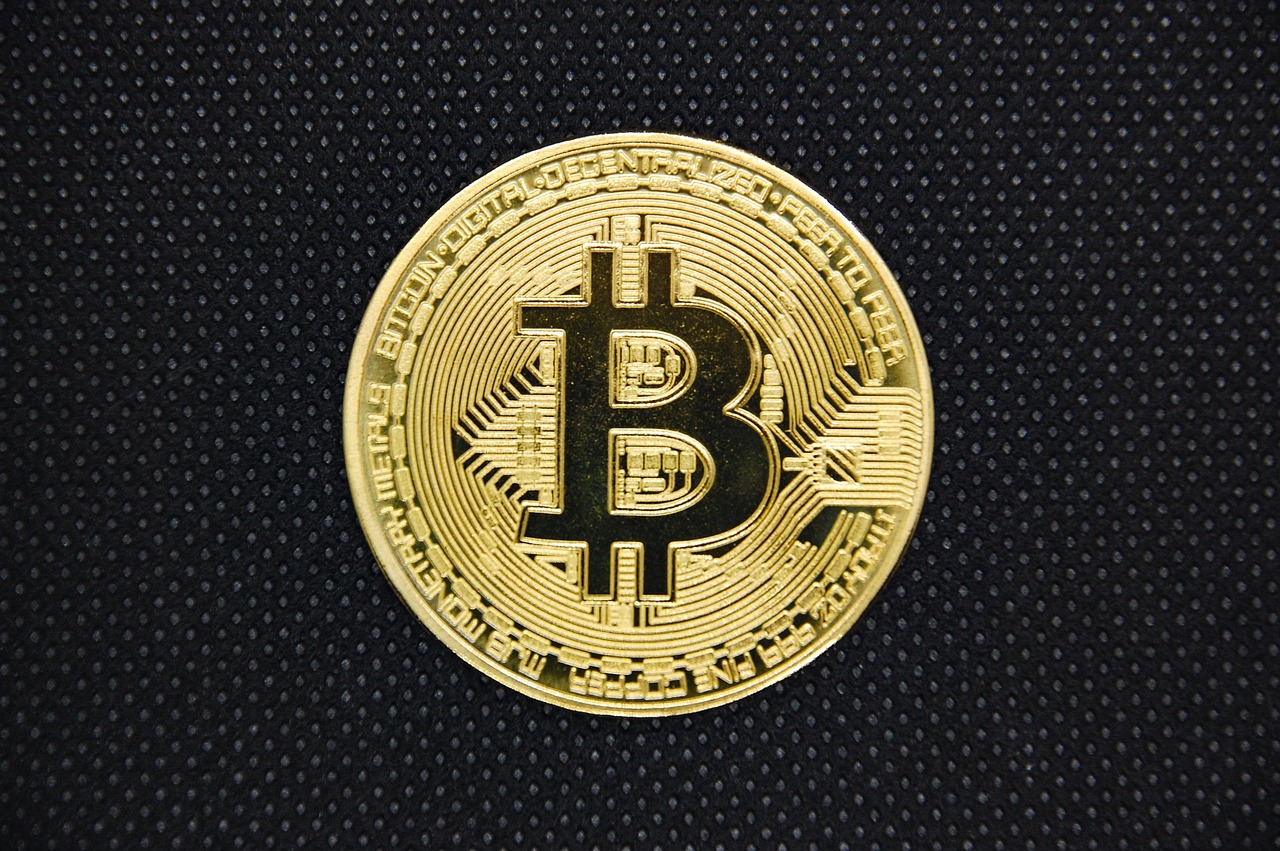
[Consensus Mechanisms and Economic Incentives]
When we dive into the world of blockchain technology, one of the most fascinating aspects is how consensus mechanisms operate as the backbone of these networks. Think of consensus mechanisms as the rules of a game that all players must follow to ensure fair play. They are crucial for validating transactions, maintaining the integrity of the blockchain, and preventing fraud. But how do these mechanisms create economic incentives for participants? Let’s break it down!
At its core, a consensus mechanism is a protocol that considers a transaction as valid only when a certain number of participants agree on it. This agreement is not just a handshake; it often involves complex processes that require computational resources or financial stakes. For instance, in Proof of Work (PoW), participants (miners) compete to solve intricate mathematical puzzles. The first one to solve it gets to add a new block to the blockchain and is rewarded with cryptocurrency. This competition is what drives miners to invest in powerful hardware and consume vast amounts of electricity. The economic incentive here is clear: the more effort they put in, the higher the potential reward.
On the other hand, we have Proof of Stake (PoS), which takes a different approach. Instead of requiring extensive computational power, PoS allows participants to validate transactions based on the number of coins they hold and are willing to "stake" as collateral. This means that those with a larger stake have a higher chance of being selected to validate transactions and earn rewards. It’s like a lottery where your chances of winning increase the more tickets you buy, but instead of tickets, you’re using your crypto holdings. This model not only reduces energy consumption compared to PoW but also encourages participants to hold onto their tokens, thus potentially increasing the token's value over time.
Both PoW and PoS have their pros and cons, and the choice of mechanism can significantly impact the network's security and efficiency. Here’s a quick comparison:
| Consensus Mechanism | Pros | Cons |
|---|---|---|
| Proof of Work | High security, decentralized | Energy-intensive, requires specialized hardware |
| Proof of Stake | Energy-efficient, encourages holding | Potential centralization, "rich get richer" problem |
Moreover, there are hybrid models that combine elements of both PoW and PoS, aiming to leverage the strengths of each while mitigating their weaknesses. This evolution in consensus mechanisms reflects an ongoing quest to create more robust, scalable, and efficient blockchain networks.
Ultimately, the economic incentives tied to these consensus mechanisms shape not just the behavior of individual participants but the entire ecosystem of the blockchain network. By understanding these dynamics, we can better appreciate how decentralized systems operate and what drives their growth. So, whether you’re a miner, a staker, or simply a curious observer, recognizing the interplay between consensus mechanisms and economic incentives is key to navigating the exciting world of blockchain technology.
- What is the main purpose of consensus mechanisms in blockchain?
Consensus mechanisms ensure that all transactions are validated and agreed upon by participants, maintaining the integrity and security of the blockchain. - How do economic incentives affect participant behavior?
Economic incentives motivate participants to invest resources, whether through mining, staking, or holding tokens, which in turn supports the health and security of the network. - Can consensus mechanisms influence the value of a cryptocurrency?
Yes, the choice of consensus mechanism can impact the network's efficiency and security, which can affect the overall perception and value of the cryptocurrency.

[Decentralized Finance (DeFi) Models]
Decentralized Finance, commonly known as DeFi, represents a groundbreaking shift in how we think about financial services. Imagine a world where you can lend, borrow, or trade assets without the need for traditional banks or financial intermediaries. Sounds revolutionary, right? Well, that's exactly what DeFi aims to achieve by leveraging blockchain technology to create an open and permissionless financial ecosystem. In this section, we will explore the economic models that underpin DeFi platforms, highlighting how they enable users to engage in financial activities in a decentralized manner.
At its core, DeFi is about empowerment. By utilizing smart contracts on blockchain networks, users can execute financial transactions automatically and transparently. This not only reduces the need for trust in third parties but also minimizes transaction costs and times. DeFi platforms are designed to be accessible to anyone with an internet connection, democratizing financial services and providing opportunities to those who have been traditionally underserved by the banking system.
One of the most exciting aspects of DeFi is its ability to create new financial instruments and services that were previously unimaginable. For instance, users can engage in lending and borrowing without a bank. Instead of going through lengthy approval processes, individuals can directly lend their assets to others and earn interest, or borrow assets by providing collateral. This peer-to-peer model not only enhances liquidity but also allows for more competitive interest rates. Below is a table summarizing the key features of lending and borrowing in DeFi:
| Feature | Lending | Borrowing |
|---|---|---|
| Process | Users provide assets to earn interest. | Users take loans against collateral. |
| Collateral Requirements | Not required; users earn interest on deposited assets. | Required; usually over-collateralized to mitigate risk. |
| Interest Rates | Variable based on supply and demand. | Variable; often lower than traditional banks. |
Furthermore, DeFi introduces the concepts of yield farming and liquidity mining, which have become buzzwords in the crypto community. Yield farming allows users to earn rewards by providing liquidity to DeFi protocols. In essence, users can stake their assets in liquidity pools and earn a share of the transaction fees generated by the platform. This not only incentivizes participation but also enhances the overall liquidity of the ecosystem. On the other hand, liquidity mining often involves rewarding users with governance tokens for their contributions, giving them a stake in the platform's future.
However, it’s crucial to recognize that while DeFi offers innovative opportunities, it also comes with its own set of risks and challenges. The absence of traditional regulatory frameworks means that users must exercise caution. Smart contract vulnerabilities can lead to significant losses if exploited, and the volatility of crypto markets can result in sudden and drastic changes in asset values. As the DeFi landscape continues to evolve, understanding these risks is essential for anyone looking to participate in this exciting new frontier.
In conclusion, DeFi models are reshaping the financial landscape by providing decentralized alternatives to traditional financial services. By leveraging blockchain technology, DeFi platforms are not only enhancing accessibility but also creating new economic opportunities for users worldwide. As we continue to explore this space, it will be fascinating to see how these models develop and what innovations emerge to further disrupt the financial sector.
- What is DeFi? DeFi stands for Decentralized Finance, which refers to financial services that operate on blockchain technology without intermediaries.
- How does yield farming work? Yield farming involves providing liquidity to DeFi protocols in exchange for rewards, often in the form of tokens.
- What are the risks associated with DeFi? Risks include smart contract vulnerabilities, market volatility, and a lack of regulatory oversight.

[Yield Farming and Liquidity Mining]
Yield farming and liquidity mining have emerged as two of the most exciting and rewarding strategies in the world of Decentralized Finance (DeFi). But what exactly do these terms mean, and why should you care? Think of yield farming as a way to put your cryptocurrency to work, much like how a farmer cultivates crops to reap a harvest. In the blockchain ecosystem, yield farming allows users to earn rewards by providing liquidity to various DeFi protocols. This is akin to depositing money in a bank to earn interest, but with potentially much higher returns.
Liquidity mining, on the other hand, is a specific type of yield farming that incentivizes users to provide liquidity to a protocol in exchange for tokens. This process is vital for the success of many DeFi projects, as it ensures there are enough assets available for trading and other financial activities. Imagine a bustling marketplace where vendors need a steady supply of goods to meet customer demand. Without liquidity, the marketplace could quickly become stagnant, leading to poor user experiences and diminished trust in the platform.
So, how do these mechanisms work in practice? When users participate in yield farming, they typically lock up their assets in a smart contract. This contract governs the terms of the agreement, stipulating how much liquidity is provided and what rewards will be earned. In return, users receive a portion of the transaction fees generated by the platform or newly minted tokens. The rewards can vary significantly based on factors like the platform’s popularity, the amount of liquidity provided, and the duration for which assets are locked up.
To give you a clearer picture, let’s take a look at the potential rewards from yield farming compared to traditional savings accounts:
| Method | Potential Annual Return |
|---|---|
| Traditional Savings Account | 0.01% - 1% |
| Yield Farming | 5% - 100%+ |
As you can see, the potential returns from yield farming are significantly higher than those from traditional savings accounts. However, with great rewards come great risks. Yield farming can expose participants to various risks, including impermanent loss, smart contract vulnerabilities, and market volatility. Impermanent loss occurs when the value of the assets you provide as liquidity changes compared to holding them in your wallet. This can lead to a situation where you end up with less value than you originally had, even after accounting for rewards earned.
Moreover, the DeFi space is still relatively new and can be unpredictable. Just like a farmer must be wary of weather conditions affecting their crops, yield farmers must be cautious of the ever-changing landscape of cryptocurrency markets. Therefore, it’s essential for participants to conduct thorough research before diving into yield farming or liquidity mining. Understanding the specific protocols, their histories, and the risks involved can make all the difference between a fruitful harvest and a barren field.
In conclusion, yield farming and liquidity mining are innovative strategies that can provide substantial rewards for those willing to navigate the complexities of the DeFi ecosystem. While the potential for high returns is enticing, it’s crucial to approach these opportunities with a balanced understanding of the risks involved. After all, just like in farming, success in yield farming requires knowledge, patience, and a bit of luck!
- What is yield farming? Yield farming is a practice where users lend or stake their cryptocurrency in order to earn rewards, typically in the form of additional tokens.
- What is liquidity mining? Liquidity mining is a subset of yield farming where users provide liquidity to a specific protocol and receive tokens as incentives.
- What are the risks of yield farming? Risks include impermanent loss, smart contract vulnerabilities, and market volatility.
- How can I get started with yield farming? To start yield farming, you'll need to research various DeFi platforms, choose one that aligns with your risk tolerance, and provide liquidity by locking your assets in a smart contract.

[Risks and Challenges in DeFi]
Decentralized Finance, or DeFi, has revolutionized the financial landscape by enabling users to engage in lending, borrowing, and trading without the constraints of traditional banking systems. However, this innovative ecosystem doesn't come without its share of risks and challenges. As with any burgeoning technology, understanding these pitfalls is crucial for anyone looking to navigate the DeFi space effectively.
One of the most significant risks in DeFi is the potential for smart contract vulnerabilities. Smart contracts, which are self-executing contracts with the terms of the agreement directly written into code, are the backbone of DeFi platforms. If there are bugs or flaws in the code, malicious actors can exploit these vulnerabilities, leading to significant financial losses. For instance, there have been numerous high-profile hacks where millions of dollars were drained from DeFi protocols due to coding errors or unforeseen exploits. It’s much like building a house on a shaky foundation; if the groundwork isn't solid, the whole structure is at risk of collapsing.
Another challenge that users face is market volatility. The crypto market is notoriously volatile, with prices swinging dramatically in short periods. This volatility can lead to situations where the value of collateral in a lending platform can plummet, risking liquidation. Imagine borrowing against a volatile asset; if its value drops significantly, you could end up losing your collateral in a flash. This unpredictability makes risk management a crucial aspect of participating in DeFi.
Additionally, regulatory uncertainty looms over the DeFi landscape. As governments and regulatory bodies grapple with how to approach cryptocurrencies and decentralized finance, participants are left in a precarious position. The lack of clear regulations can lead to sudden changes in the legal status of DeFi operations, potentially affecting user access and the viability of platforms. It's like walking a tightrope without a safety net; one misstep could lead to significant consequences.
Furthermore, liquidity risks are prevalent in DeFi. While many platforms promise high yields for providing liquidity, the reality can be quite different. In some cases, if there aren’t enough participants in a liquidity pool, users may find it challenging to withdraw their funds when needed, akin to trying to get your money out of a bank during a financial crisis. This lack of liquidity can deter users from fully engaging with DeFi platforms.
Lastly, user error is a significant risk that cannot be overlooked. The DeFi space is often complex and requires a certain level of technical knowledge. Users may inadvertently send funds to the wrong address, fail to execute transactions correctly, or mismanage their private keys. These errors can lead to irreversible losses, underscoring the importance of education and awareness in this rapidly evolving space.
In conclusion, while DeFi offers exciting opportunities for financial empowerment and innovation, it is essential to approach it with caution. By understanding the risks and challenges associated with DeFi, users can make informed decisions and navigate this new financial frontier more safely.
- What is DeFi? Decentralized Finance (DeFi) refers to financial services that operate on blockchain technology, allowing users to lend, borrow, and trade without intermediaries.
- What are smart contracts? Smart contracts are self-executing contracts with the terms of the agreement directly written into code, enabling trustless transactions on the blockchain.
- What are the risks associated with DeFi? Risks include smart contract vulnerabilities, market volatility, regulatory uncertainty, liquidity risks, and user errors.
- How can I protect myself in DeFi? Educate yourself about the platforms you use, understand the risks involved, and consider diversifying your investments to mitigate potential losses.
Frequently Asked Questions
-
What are the main economic models behind blockchain networks?
The economic models behind blockchain networks primarily include incentive structures, tokenomics, and consensus mechanisms. These models help in shaping user behavior, incentivizing participation, and ensuring the security and efficiency of the network.
-
How do incentive structures work in blockchain?
Incentive structures are designed to motivate participants to contribute resources and validate transactions. By rewarding users for their contributions, these structures enhance network security and efficiency. Think of it as a community garden where everyone who helps out gets a share of the harvest!
-
What is tokenomics and why is it important?
Tokenomics refers to the economic principles that govern the creation and distribution of tokens within blockchain networks. It is crucial because it affects user engagement and value creation, ultimately determining how successful a blockchain project can be.
-
What is the difference between utility tokens and security tokens?
Utility tokens are designed for specific functionalities within a network, allowing users to access services or products. Security tokens, on the other hand, represent ownership in an asset and are subject to regulatory scrutiny. Understanding these differences is essential for investors and users alike.
-
What are some common use cases for utility tokens?
Utility tokens can be used for various purposes, such as facilitating transactions in decentralized applications, accessing premium features, or participating in governance. They serve as the lifeblood of many blockchain ecosystems, enabling seamless interactions.
-
What regulatory challenges do security tokens face?
Security tokens encounter distinct regulatory challenges, including compliance with securities laws and regulations. This can affect both investors and issuers, as navigating the legal landscape is crucial for ensuring the legitimacy and security of investments.
-
How do consensus mechanisms influence economic incentives?
Consensus mechanisms, like Proof of Work and Proof of Stake, play a vital role in maintaining blockchain integrity. They create economic incentives for participants by rewarding them for validating transactions and securing the network, much like a referee ensuring fair play in a game.
-
What are the key features of Decentralized Finance (DeFi) models?
DeFi models enable lending, borrowing, and trading without traditional intermediaries. They leverage blockchain technology to create open financial systems that are accessible to anyone with an internet connection, promoting financial inclusivity.
-
What is yield farming and how does it work?
Yield farming is a popular strategy in DeFi where users provide liquidity to decentralized platforms in exchange for rewards. It’s like planting seeds in a garden; the more you contribute, the more you can harvest in terms of returns!
-
What risks are associated with DeFi?
While DeFi offers exciting opportunities, it also presents risks such as smart contract vulnerabilities and market volatility. Just like any investment, it’s essential to do your homework and understand the potential pitfalls before diving in.

